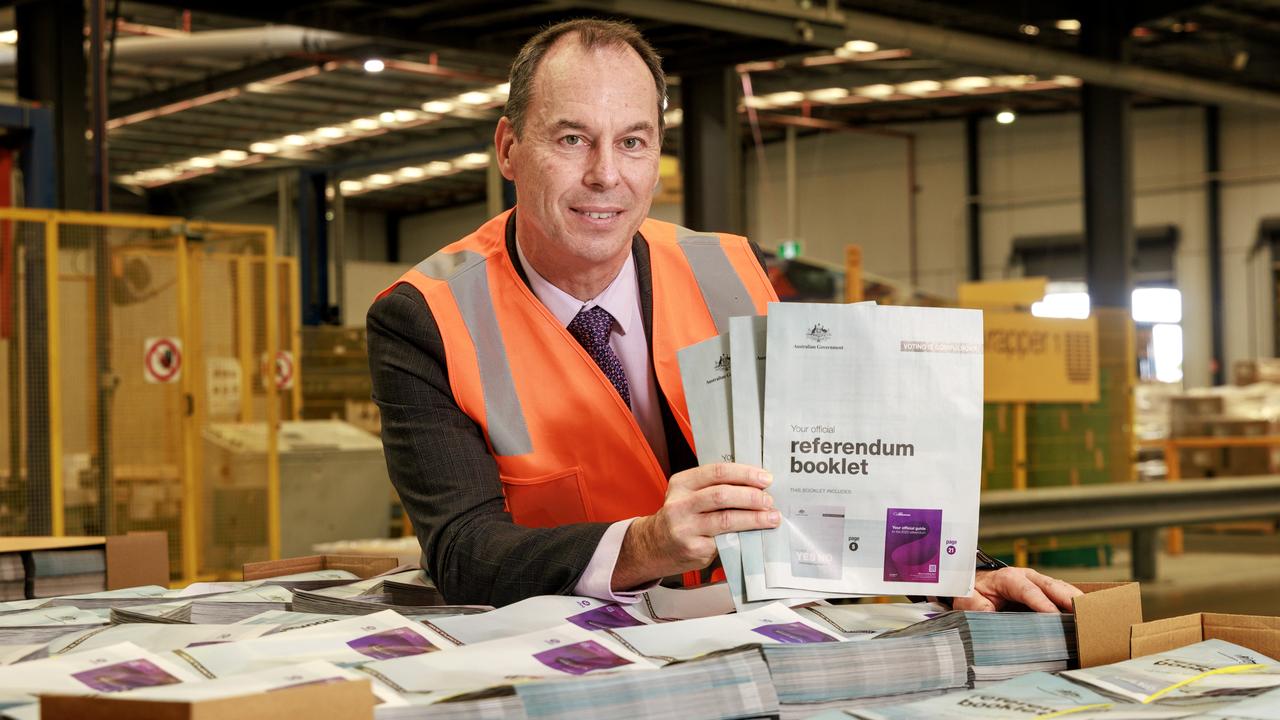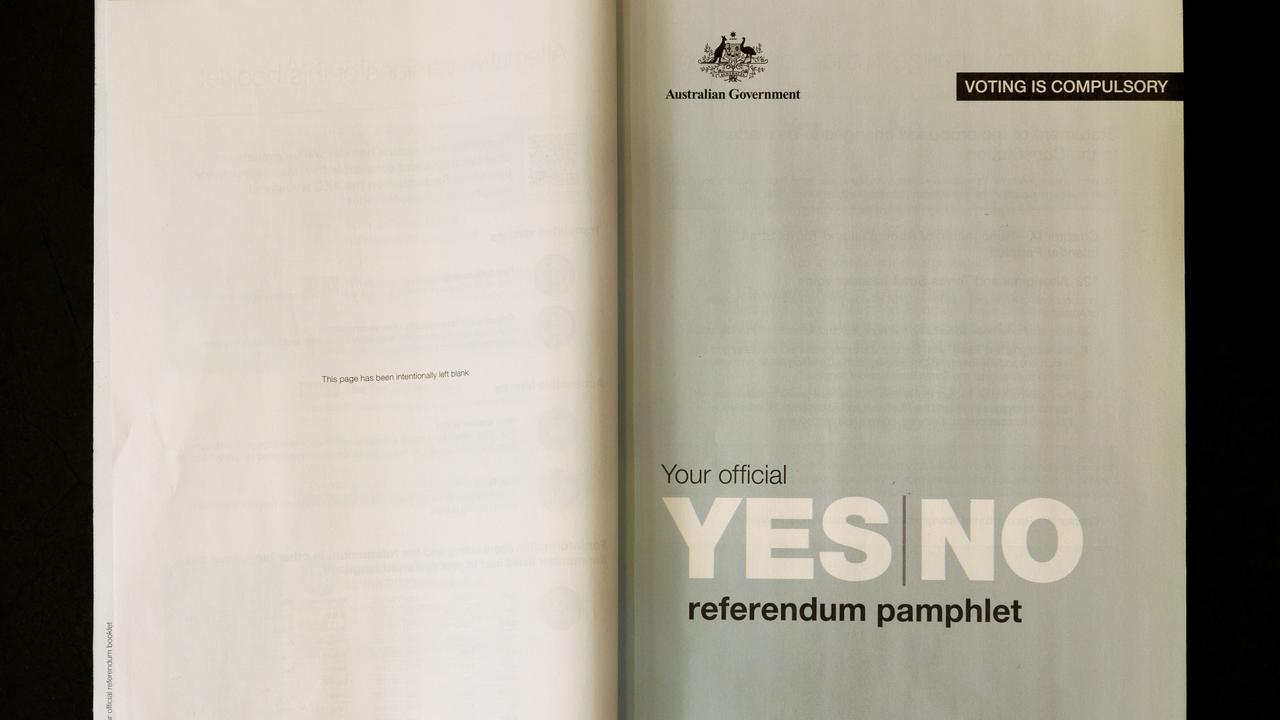Your quick guide to voting in the October 14 Voice referendum
With the date finally announced for the 2023 Voice referendum, here is everything you need to know about how to vote, where, and what happens if you don’t.
With the date finally announced for the 2023 Voice referendum, here is everything you need to know about how to vote, where, and what happens if you don’t.
Referendum date:
October 14.
What is a referendum?
A referendum is a nationwide vote to change the Australian Constitution. For a referendum to pass, a national majority of voters, as well as a majority of voters in a majority of the states (at least four states) must vote ‘yes’ to the change.
What is this referendum about?
The Indigenous Voice to Parliament Referendum is a vote on whether we want an alteration to the Constitution that establishes an Aboriginal and Torres Strait Islander Voice..


What is the question?
A Proposed Law: to alter the Constitution to recognise the First Peoples of Australia by establishing an Aboriginal and Torres Strait Islander Voice. Do you approve this proposed alteration? Yes or no.
Where can you vote?
You can vote at any polling place on voting day. Like the Victorian election last year, polling places will be set up at local schools, churches and community halls, or public buildings. The locations of these polling places will be available on the AEC website. Polling places open between 8am and 6pm.
Will the referendum polling booths look like state or federal election polling booths?
Pretty much, yes. There will be polling booths, placards and likely democracy sausages on offer, but as there is just one question that requires a yes or no answer, it will be much faster.
Where can I vote early?
Postal voting, early voting and mobile polling will also be available for the referendum. Early voting opens in Victoria on October 2. You can find your nearest early polling station here.
Can I be fined if I fail to vote in the referendum?
Yes. Voting is compulsory for Australian citizens aged 18 years or older. If you do not vote and don’t have a valid and sufficient reason, you may be fined. The AEC will write to you at the address listed on the electoral roll and ask you to provide a reason why you did not vote. It is at the discretion of the AEC’s Divisional Returning Officer (DRO) for each electorate to determine whether you have provided a valid and sufficient reason for not voting. The DRO will consider the merits of your individual case and take into account any specific circumstances at the polling places within their division in making a determination.
How do I vote?
At a referendum, you will receive a ballot paper with the proposed alteration to the Constitution on it, followed by a question asking if you approve the proposed alteration. On the referendum ballot paper you need to indicate your vote by clearly writing:
YES in the box if you approve the proposed alteration or NO in the box if you do not approve the proposed alteration.
How do I find out more about the cases for and against the Voice, so I can decide how I want to vote?
The AEC is required to distribute a pamphlet to Australian voters, containing the Yes and No cases prepared by parliamentarians who voted for and against the proposed law. The pamphlet will be distributed to all Australian households throughout August and September 2023. The pamphlet contains a statement containing the proposed change to the Constitution, the case that is in favour of the proposed constitutional alteration, and the case that is against the proposed constitutional alteration. Each case consists of no more than 2000 words. These pamphlets will arrive in your mailbox shortly.


What is the procedure?
When you arrive at the polling place, a polling official will ask you three questions: What is your full name? Where do you live? Have you voted before in this referendum? If your answers match what is on the electoral roll, and you have not voted before in the referendum, the polling official will mark you off the electoral roll, hand you a ballot paper and a pencil, and direct to a voting screen where you cast your vote.
Can I change the wording on the ballot paper?
No. If a voter manipulates the wording of a referendum question on their ballot paper, whether by adding or deleting words, this will likely only have the effect of making that voter’s intention regarding the actual question unclear. Doing so is likely to lead to an informal (donkey) vote.
Can I vote electronically?
The answer is no for the vast majority of people. The AEC conducts referendums in accordance with the Referendum (Machinery Provisions) Act 1984. The introduction of electronic voting would require legislative change, which is a matter for Parliament.
What if I am blind?
Telephone voting is available those who are blind or low vision, and for those living in Antarctica.
Can I vote more than once?
No. It is an offence under the Referendum (Machinery Provisions) Act 1984 to vote more than once in a referendum.
What if my name can’t be found on the electoral roll?
If your name cannot be found on the certified list, you will be asked to spell your name or print it on a piece of paper and the certified list will be rechecked. You may also be asked if you could be on the roll under a different name (do you have a former name?). If your name still cannot be found, or your name on the list has been marked in some way, you will be directed to cast a declaration vote.
What is a declaration vote?
A declaration vote is when an elector makes a declaration about their entitlement to vote. Declaration votes are issued when the elector casts an absent, pre-poll, postal or provisional vote.
When was the last time a referendum was held in Australia?
1999.
(Source: Australian Electoral Commission)




